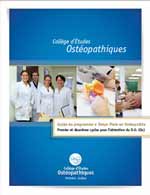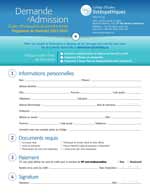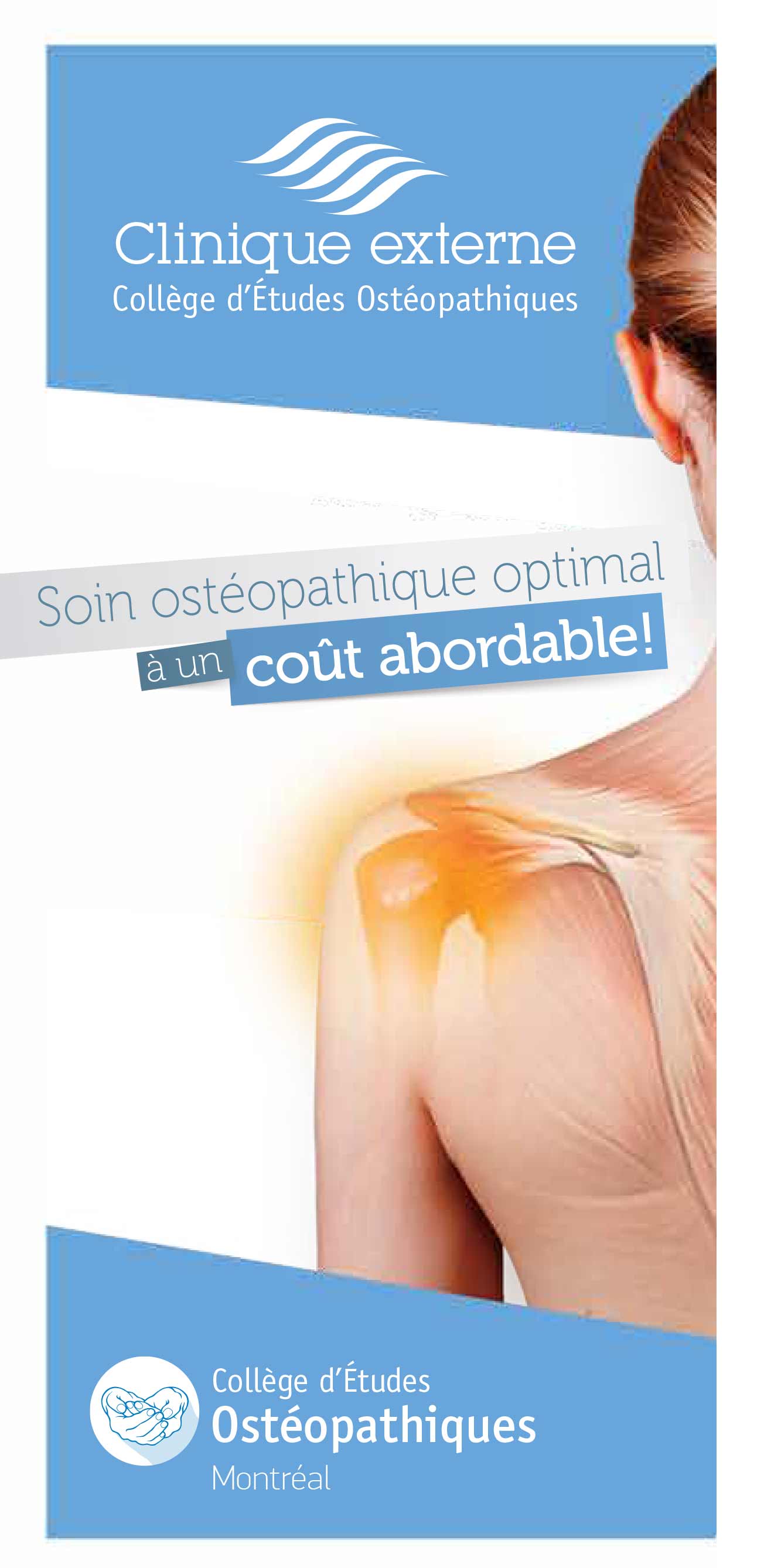435
Berry
Street,
Winnipeg
Manitoba
R3J
1N6

Class of 1909 with Doctor Andrew Taylor Still
Tradition, Research and Know-How

A.T.
Still
founded
Osteopathy
on
June
22nd,
1874

Commemorative stamp marking the 100th anniversary of osteopathy

The founder Dr Andrew Taylor Still - Transmission generation to generation

The first cranial course in Paris in 1965 - Thomas Schooley D.O., Viola Frymann D.O., Harold Magoun D.O., Denis Brooks D.O.

The day of the success to get Bachelor with honor degree formation validated by University of Wales

Teaching with American DO’s at Osteopathic Center for Children.
History of Osteopathy & the Canadian Ostepathic College in Winnipeg
Traditional
Osteopathy,
as
presented
by
the
Canadian
College
of
Osteopathy,
is
defined
as:
“A
natural
manual
therapy
which
aims
to
restore
function
in
the
body
by
treating
the
causes
of
pain
and
imbalance.
To
achieve
this
goal
the
Osteopathic
Manual
Practitioner
relies
on
the
quality
and
finesse
of
his/her
palpation
and
works
with
the
position,
mobility
and
quality
of
the
tissues.”
The
osteopathic
philosophy
embraces
the
notion
that
the
body
is
naturally
capable
of
healing
itself.
The
practitioner
of
traditional
Osteopathy
works
with
the
body
to
enhance
this
natural
ability
to
self-regulate
and
self-heal.
Palpation
(sometimes
referred
to
as
listening)
is
a
diagnostic
skill
that
the
Osteopathic
Manual
Practitioner
uses
to
feel
or
sense
the
state
of
the
tissues
or
systems
being
examined.
This
sense
encompasses
the
many
sensory
aspects
of
touch,
such
as
the
ability
to
detect
moisture,
texture,
temperature
differential,
and
subtle
motion.
The
ability
to
detect
almost
imperceptible
motion
provides
the
Osteopathic
Manual
Practitioner
with
the
capability
of
perceiving
the
inherent
motion
present
in
all
living
organisms.
This
palpatory
ability
is
not
a
gift—rather,
it
is
a
trained
skill
that
takes
years
to
develop.
Osteopathic
Manual
Practitioners
palpate
by
gently
yet
intentionally
touching
the
tissues
or
systems
under
examination.
With
experience,
Osteopathic
Manual
Practitioners
learn
to
palpate
not
just
superficially,
but
also
very
deeply
within
the
body.
Sensory
information
is
received
through
touch
receptors
in
the
fingertips
and
palms,
as
well
as
through
the
proprioceptors
(motion
and
position
sensors)
embedded
deep
in
the
joints
of
the
hands,
wrists,
arms,
and
even
the
shoulders.
The
ability
to
detect
minute
modifications
in
the
quality
of
the
tissues
is
the
assessment
skill
that
allows
the
Osteopathic
Manual
Practitioner
to
prioritize
a
patient's
course
of
treatment.
These
tissue
qualities
include
congestion,
dehydration,
scarring,
stiffness,
density,
and
loss
of
resilience,
as
well
as
motility,
which
is
an
infinitesimal
movement
inherent
to
all
living
tissues.
It
is
this
sensing
of
the
quality
of
the
tissue—in
combination
with
the
position,
mobility,
and
vitality
of
the
tissue—that
allows
the
Osteopathic
Manual
Practitioner
to
determine
the
tissues
or
systems
that
need
immediate
attention.
History of Osteopathy
The
profession
of
Osteopathy
was
founded
single-handedly
in
1874
by
an
American
physician,
with
a
mechanical
background,
named
Andrew
Taylor
Still
(1828-1917).
Still
was
the
third
son
of
a
pioneer
doctor,
under
whom
he
apprenticed
at
the
close
of
the
Jacksonian
era
(1829-1837).
It
was
a
time
that
encouraged
independent
thought
and
the
development
of
new
disciplines
to
improve
the
lot
of
mankind.
Following
Still's
participation
in
the
American
Civil
War,
he
began
an
empirical
study
of
the
human
body
under
the
premise
that
by
studying
“God's
work”
he
would
have
a
greater
understanding
of
his
“Creator.”
Still
disdained
the
common
practices
of
physicians
in
the
1800s,
such
as
venesection,
emesis,
and
sedation
with
narcotics.
He
believed,
instead,
that
everything
necessary
to
sustain
human
life
was
already
present
within
the
human
body.
Still
sought
to
find
non-medicinal
and
non-surgical
avenues
to
enhance
the
body's
innate
ability
to
heal
itself.
Still
focused
on
mechanical
removal
of
the
impediments
to
the
free
circulation
of
fluids
and
the
elements
carried
within
those
fluids.
He
believed
that
once
these
“mechanical
blockages”
to
the
free
flow
of
fluids
were
removed,
the
free
circulation
of
all
the
fluids
of
the
body
would
naturally
return.
The
free
flow
of
fluids
was
Still's
key
to
the
self-regulation
and
self-healing
processes
of
the
body.
Still's
application
of
this
philosophy
and
methodology
proved
successful
in
treating
musculoskeletal
problems,
as
well
as
the
major
diseases
of
his
era,
such
as
tuberculosis,
pneumonia,
dysentery,
and
typhoid
fever.
Still's
work
was
transmitted
through
writings
that
were
primarily
philosophical
in
nature.
However,
he
also
described
two
main
practical
techniques.
One
focused
on
restoring
the
“position”
of
the
bones
in
relation
to
one
another.
The
other
restored
the
“place”
of
the
organs
in
relation
to
the
major
vessels
and
neural
centers
of
the
body's
cavities.
These
two
systems
are
now
known
as
osteo-articular
adjustments
and
visceral
normalization.
The
first
school
of
osteopathy
was
opened
by
Still
in
Kirksville,
Missouri
in
1892.
Several
of
his
original
students
later
enhanced
the
profession
through
the
introduction
of
other
manual
techniques,
such
as
cranial-sacral
therapy
and
fascial
release.
By
1910,
it
was
recommended,
through
sponsored
reports,
that
osteopathic
colleges
within
the
United
States
adopt
a
system
of
higher
education,
licensing,
and
regulation.
By
1930,
through
a
staggered
transition,
the
American
osteopathic
profession
adopted
a
medical
model
of
osteopathic
education
that
incorporated
all
conventional
diagnostic
and
therapeutic
practices
of
medicine,
including
pharmacology,
surgery,
and
obstetrics.
For
this
reason,
all
graduates
from
osteopathic
colleges
and
universities
in
the
United
States
are
fully
licensed
medical
physicians
and
are
recognized
internationally
as
Osteopathic
Physicians.
The
rest
of
the
world—including
Europe,
Asia,
Canada,
and
the
countries
of
the
Southern
Hemisphere—has
not
adopted
this
medical
model
of
Osteopathy.
Instead,
their
curricula
focus
primarily
on
the
manual
application
of
traditional
osteopathic
philosophy
and
principles.
In
1917,
Osteopathy
took
root
in
Europe
thanks
to
Martin
Littlejohn,
DO,
a
student
of
Dr.
Still
and
a
professor
at
the
Kirksville
osteopathic
school.
Littlejohn
founded
the
British
School
of
Osteopathy,
which
remains
active
today
under
the
name.
In
France,
the
origin
of
Osteopathy
has
been
traced
to
Major
Stirling
in
1913.
The
Collège
d’Études
Ostéopathiques
(CEO)
was
founded
on
March
11th,
1981
in
Montreal
by
Philippe
Druelle,
D.O.,
an
osteopath
trained
in
France,
assisted
by
Dr.
Jean-Guy
Sicotte,
MD,
D.O.
This
college
was
the
first
of
its
kind
in
Canada
to
offer
a
comprehensive
program
and
teach
traditional
manual
osteopathy.
In
1991,
The
Canadian
College
of
Osteopathy
(CEO)
was
founded
by
Philippe
Druelle
with
the
help
of
Marie
Colford,
D.O.
The
lineage
of
Traditional
Osteopaths
can
be
followed
directly
to
the
faculty
of
the
CEO.
In
particular,
such
renowned
Osteopaths
as
Thomas
Schooley,
DO;
Denis
Brooks,
DO;
Anne
Wales,
DO;
and
Viola
Frymann,
DO,
have
all
either
been
instructors
in
the
college's
faculty
or
guest
lecturers
at
symposium
held
by
the
CEO
and
CEO.
These
Osteopaths
were
all
students
of
William
Garner
Sutherland,
who
was
a
student
of
A.T.
Still's
1900
graduating
class.
Fred
Mitchell,
Jr.,
has
been
an
instructor
of
the
CEO's
course
titled,
Muscle
Energy,
which
was
a
concept
developed
by
his
father,
Fred
Mitchell,
Dr.
Harold
Magoun,
Sr.,
wrote
one
of
the
CEO's
most
relied-upon
textbooks,
Osteopathy
in
the
Cranial
Field.
Magoun's
son,
Harold
Magoun,
Jr.,
an
Osteopath
with
more
than
50
years
of
experience,
was
a
regular
guest
lecturer
at
our
college.
The
direct
lineage
from
the
founding
predecessors
of
traditional
Osteopathy
distinguishes
the
education
program
offered
by
CEO
from
all
other
osteopathic
colleges
in
Canada.
Contact
435
Berry
Street,
Winnipeg
Manitoba
R3J
1N6
Phone:
416-597-0367
Toll
free:
1-877-893-0367
Fax:
416-597-9919







